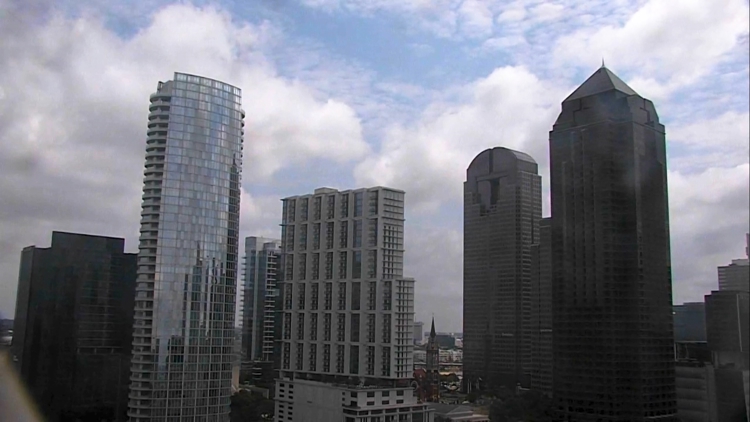DALLAS — Plans for an alternate Dallas-to-Fort Worth high-speed rail route that bypasses downtown Dallas, are moving along.
The proposed route is progressing with preliminary engineering and environmental documentation work after it was discussed during a Monday North Central Texas Council of Governments meeting.
Last month, the Regional Transportation Council approved $1.65 million more to study the proposed high-speed rail route, which would run west of downtown Dallas, between the Trinity River and South Riverfront Boulevard. The proposed route would then cut across Houston Street and I-35E before reaching a station in the Cedars.
Last month, the Dallas City Council approved a resolution this summer opposing a previous route planned for the project, which cut through downtown Dallas. At that time, a prominent developer raised concerns that that route could impact businesses, including Reunion Tower, and warned the route’s proximity to the landmark could cause them to “sacrifice” hotel rooms and the tower’s iconic ball. The tracks would also be anchored in developable land, potentially interfering with planned construction.
North Central Texas Council of Governments Program Manager Brendon Wheeler said Monday that the purpose of the Dallas-to-Fort Worth route is to connect the route to other facilities around the state, including a Dallas-to-Houston high-speed rail line in the works that is being led by Amtrak and Texas Central.
“There’s a gap between Fort Worth and Dallas in the metroplex and the 30 miles in between that this study is intending to fill," Wheeler said Monday. “Connecting to the Dallas-to-Houston line really provides a backbone and opportunities for high-speed rail advancement throughout the state.”
“You’re really seeing…Dallas-Fort Worth being the focal point west of the Mississippi for all these passenger rail movements – potential passenger rail movements – from around the country,” Wheeler added.
He said the project will help provide additional transportation options as the Dallas-Fort Worth area grows.
“Our roadway corridors are not reliable and they will become increasingly less reliable as will our airports and other modes, so being able to pay for reliable service will be an increasingly important commodity between now and 2045,” Wheeler said.
Some residents expressed concerns about how accessible the train will be under the new proposed route, which bypasses Dallas, including its proximity to existing public transit.
“My biggest concern as a Dallas resident is how do I access this train?” a speaker asked Monday. “I know exactly how to access the TRE and the DART. Unfortunately, I don’t see how this train connects to either of those right now. And if you’re going to move it west of those expressways, it’s even further from any connection that I will ever take to get to this thing. Do I have to take an Uber or a Lyft to get to the Cedars? Or do I have to drive to the Cedars?”
Wheeler said the new route will still need additional vetting.
“This is only a concept, this is not a final alignment,” Wheeler added. “Engineers would need to look at plans and the project team would need to begin stakeholder coordination to better understand impacts associated with that particular corridor and any refinements of an alternative between 35 and the eastern levee before being able to propose an alignment to the city for consideration.”



